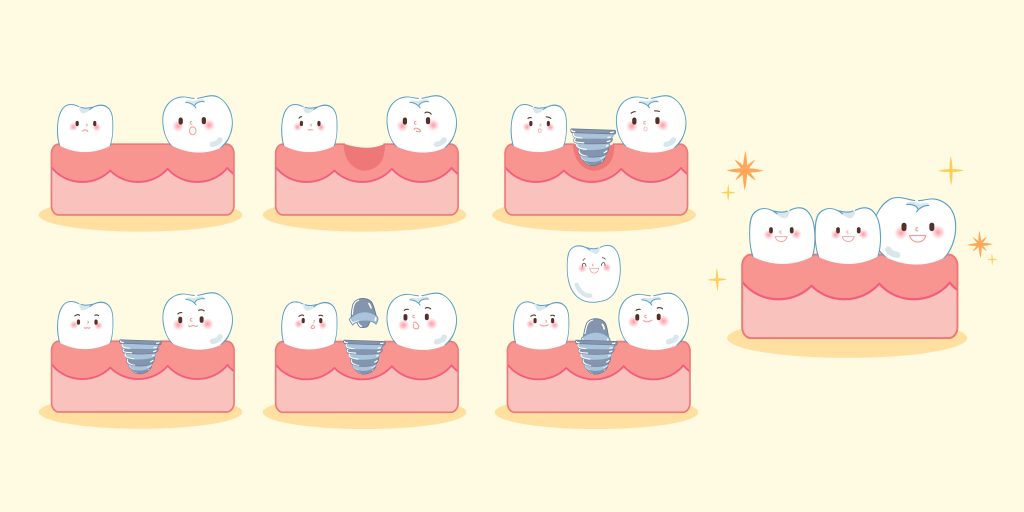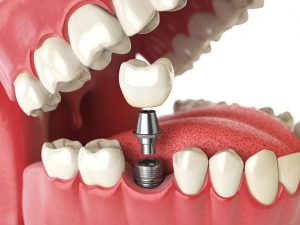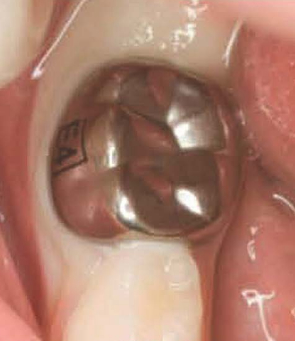
Stainless Steel Crowns: A Stronger Way to Repair Decayed or Underdeveloped Back Teeth
Stainless steel crowns are metal caps made from a combination of stainless steel, nickel, and chrome. These crowns are often used to treat back teeth (molars) that have either decayed or not formed properly due to hypomineralization. They are a more durable option than traditional fillings and offer stronger protection to the tooth.
Pre-made in the shape of the tooth, stainless steel crowns come in a range of sizes. Our dental team selects a crown that will fit over and cover the entire tooth that sits above the gumline.
Crowns can help protect the tooth from further decay and create space in the mouth for adult teeth to grow. Children who need stainless steel crowns typically fall into one of the following categories:





Before
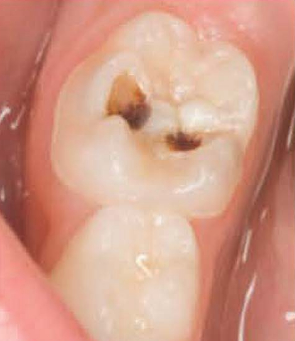
After

Stainless steel crowns have a shiny, silver appearance and are commonly placed on back molars, making them less noticeable than you might expect. Children are often pleased to have a “pirate tooth,” “princess tooth,” “transformer tooth,” “silver cap,” or “hat.”
In general, the crown should remain in place until the baby tooth falls out naturally as the adult tooth erupts. However, in rare cases, the crown may need to be removed or replaced before the tooth falls out.
The procedure for placing a stainless steel crown may or may not require local anesthesia. In some cases, the crown can be slotted over the tooth without extensive decay removal. If the crown does not fit properly, the tooth will be shaped to fit the crown. If nerve/root treatment is required, extensive decay removal and local anesthesia will be necessary before crown placement. Elastic bands are sometimes used to create a small space between the teeth, which allows the crown to be properly seated without shaping the tooth.
After the crown is placed, it should be treated like a normal tooth. Children should brush it twice a day along with their other teeth to maintain proper oral hygiene.
Overall, stainless steel crowns offer a strong and durable solution for repairing decayed or underdeveloped back teeth in children. Talk to your dentist if you think your child might benefit from this treatment.
Dental implants in North Brisbane
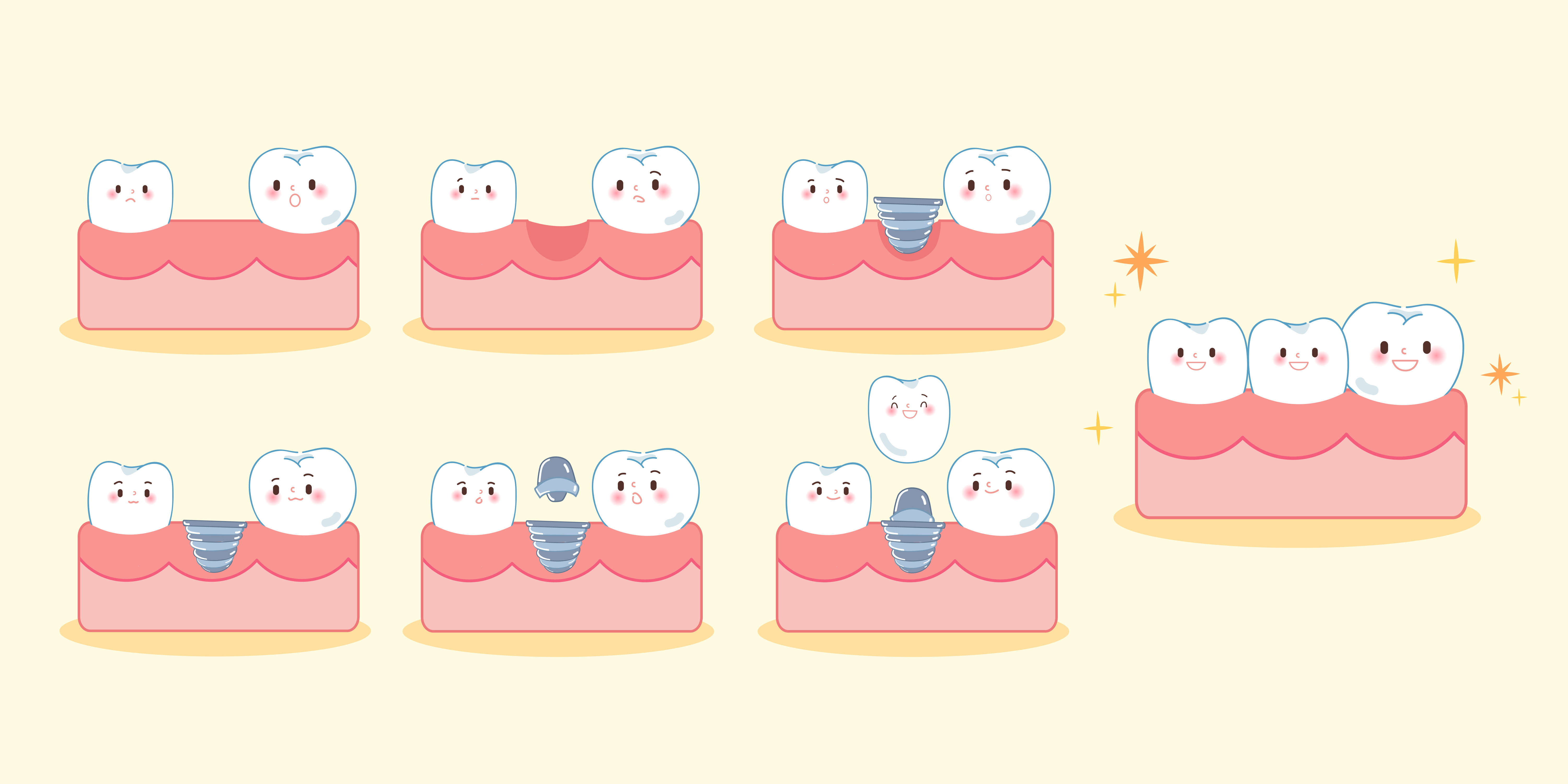
Dental implants; what are they and how does it work?
Dental implants are used to replace a missing tooth or teeth, and are a mechanical tooth supported by a titanium implant. This is done over a number of stages with the final result of a natural looking tooth where there used to be a gap.
They have many advantages over other methods of replacing missing teeth as they stand independently to your other teeth and don’t place extra strain on your surrounding teeth. They allow full function and give a natural looking tooth or teeth in your gap.
Stage 1: Healing phase
Generally following removal of a tooth, a healing period of two to three months is needed for the gums and bone to heal and shrink into their new shape. If you have been missing a tooth or teeth for longer than three months already there is no need to wait, you can move straight to Stage 2.
During this healing phase, a temporary tooth replacement can be arranged which is especially useful in visible areas at the front of your mouth. This may be a removable denture/plate or a temporary bridge using your teeth either side for support.
Stage 2: Information gathering
Following the healing phase radiographic xrays, photos and moulds of your teeth and gums are required to check if you are suitable for an implant and if you have enough bone and gum to support a dental implant.
The moulds, photos and full mouth 2D xray are done first to have a general assessment of the area where the dental implant supported tooth or teeth are to be placed.
Once you are informed on what a dental implant is, a thin mouthguard with a mocked up tooth is then made to wear during a large CT xray to assess the jaw shape in three dimensions and plan your dental implant supported tooth.
Stage 3: Review of the dental implant planning
After we carefully plan your implant position using the 3D xray model of your jaw, we will go through the plan with you discussing the procedure in detail specifically for your mouth and implant supported tooth. You will have all the information on your planned procedure and a full quote.
If for any reason you are not suitable for a dental implant you will find out at this stage, and plans for an alternative replacement for your tooth can begin.
Stage 4: Placement of your dental implant
Instructions will be given to you to take antibiotics and pain relievers immediately before your dental implant placement appointment. These are very useful to keep swelling, bruising and discomfort to a minimum.
The dental implant is usually placed under local anaesthetic at Tooth Dental and is generally a straightforward quick process. In some cases the dental implant will have a white healing cap poke
through to sculpt the gum shape, in others the dental implant will be covered with gum and uncovered at a later date.
Following dental implant placement, rest that day is recommended, although you can return to light duties at work if desired. Generally there is very minor swelling, bruising and discomfort for one or two days, with the minor swelling settling over a week.
One or two weeks later we will review the dental implant area and remove any sutures remaining.
Stage 4: Healing and integration phase
Following dental implant placement a healing phase of approximately three months is required to allow your titanium implant to integrate and bond to your bone. After three months the implant will be checked with radiofrequency to ensure the dental implant is integrated and ready to have your tooth placed, supported by your dental implant.
Stage 5: Moulds and placement of your tooth
Moulds and photos of your dental implant can now be taken and sent to a dental laboratory to make your tooth supported by your dental implant. Generally the laboratory requires two weeks to make your crown fit and match perfectly. Then your dentist can place your dental implant crown and you can smile widely, eat normally and enjoy your natural looking dental implant supported crown.
Your dental implant supported crown will require some maintenance and regular checks which are generally done as part of your six monthly examination and clean with your dentist.
Click here to learn more about the service and to make a booking.

